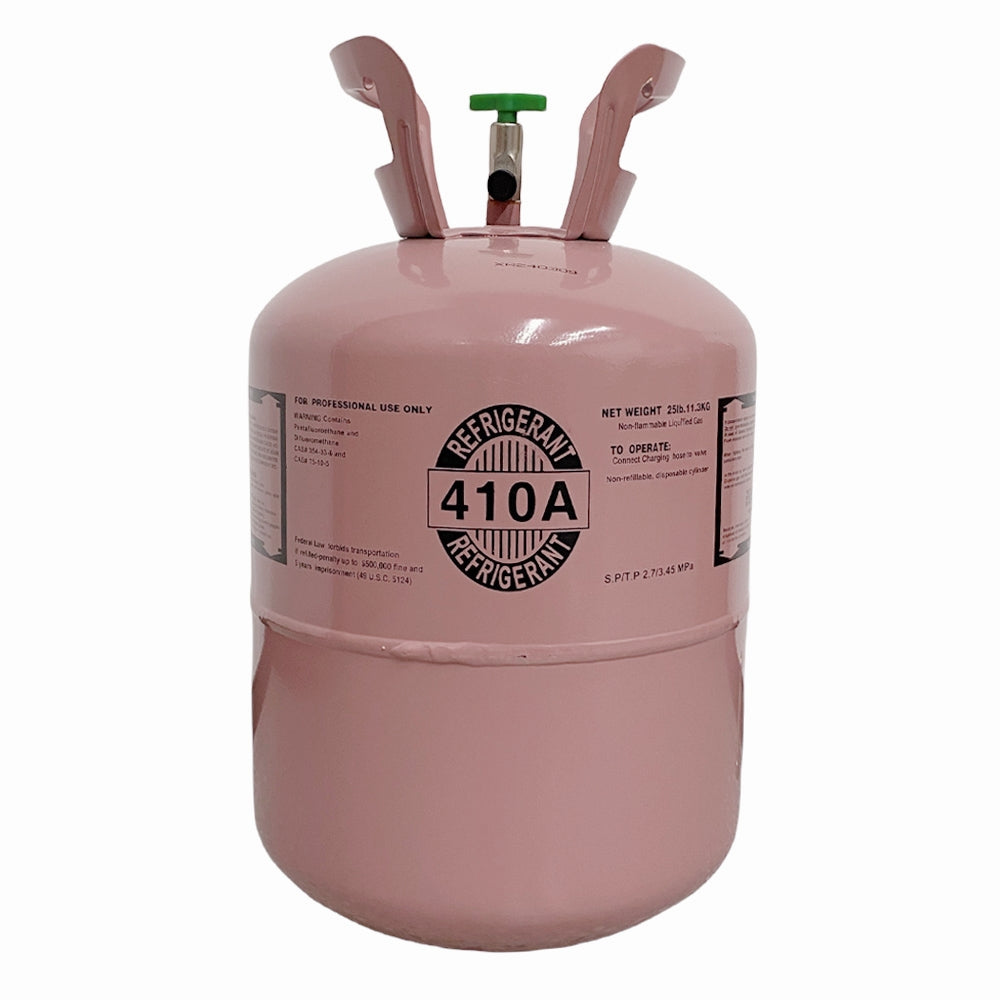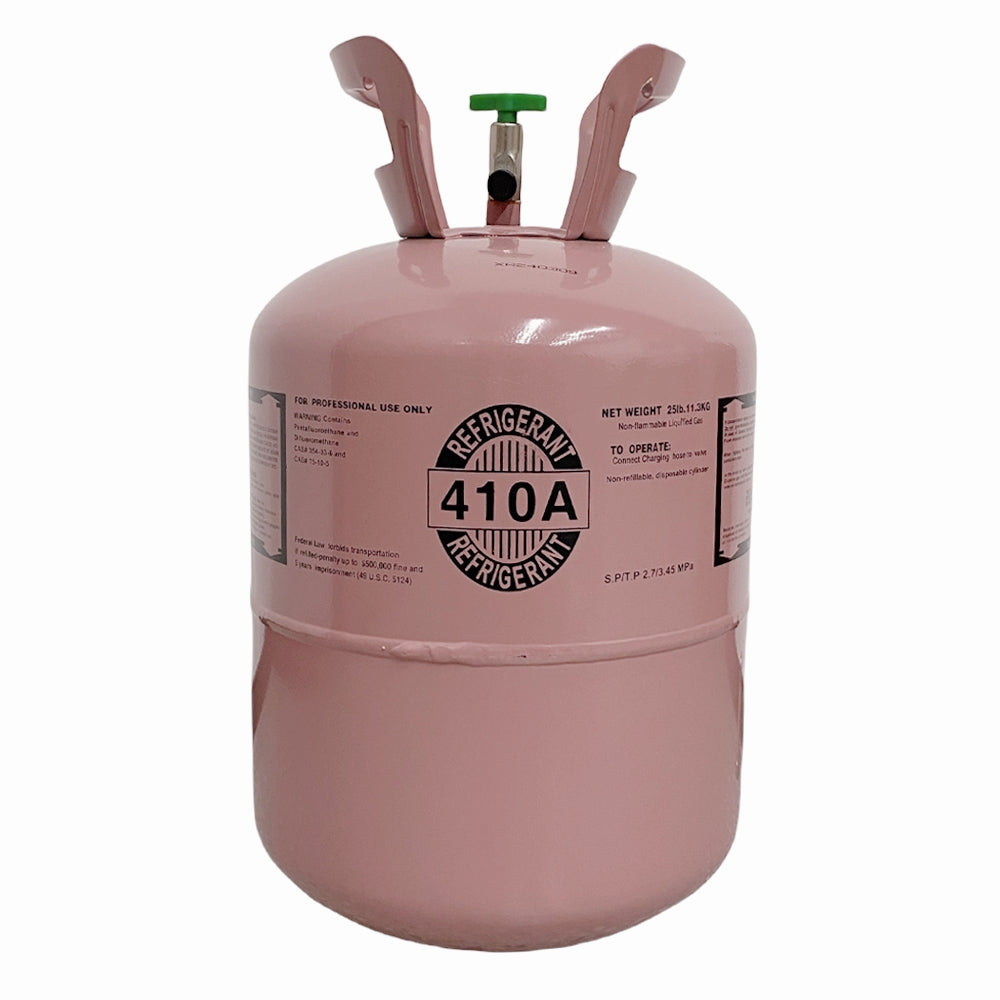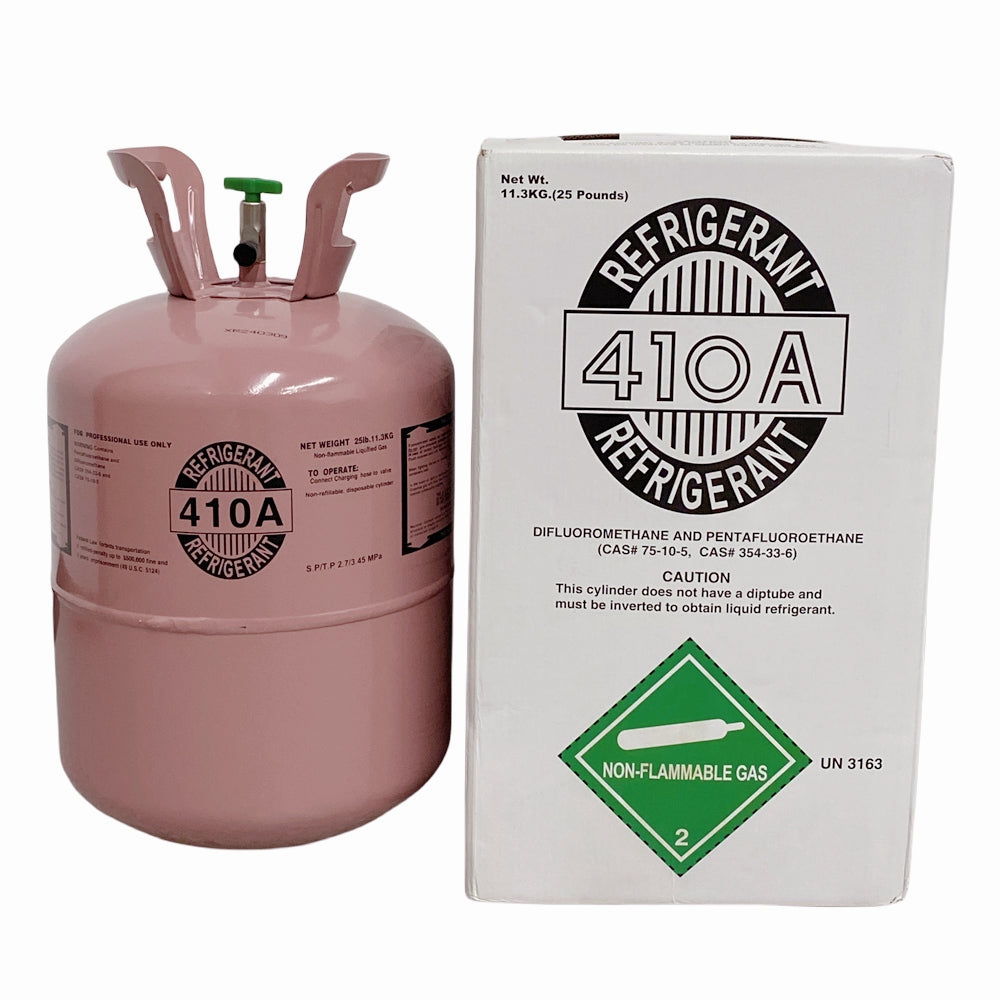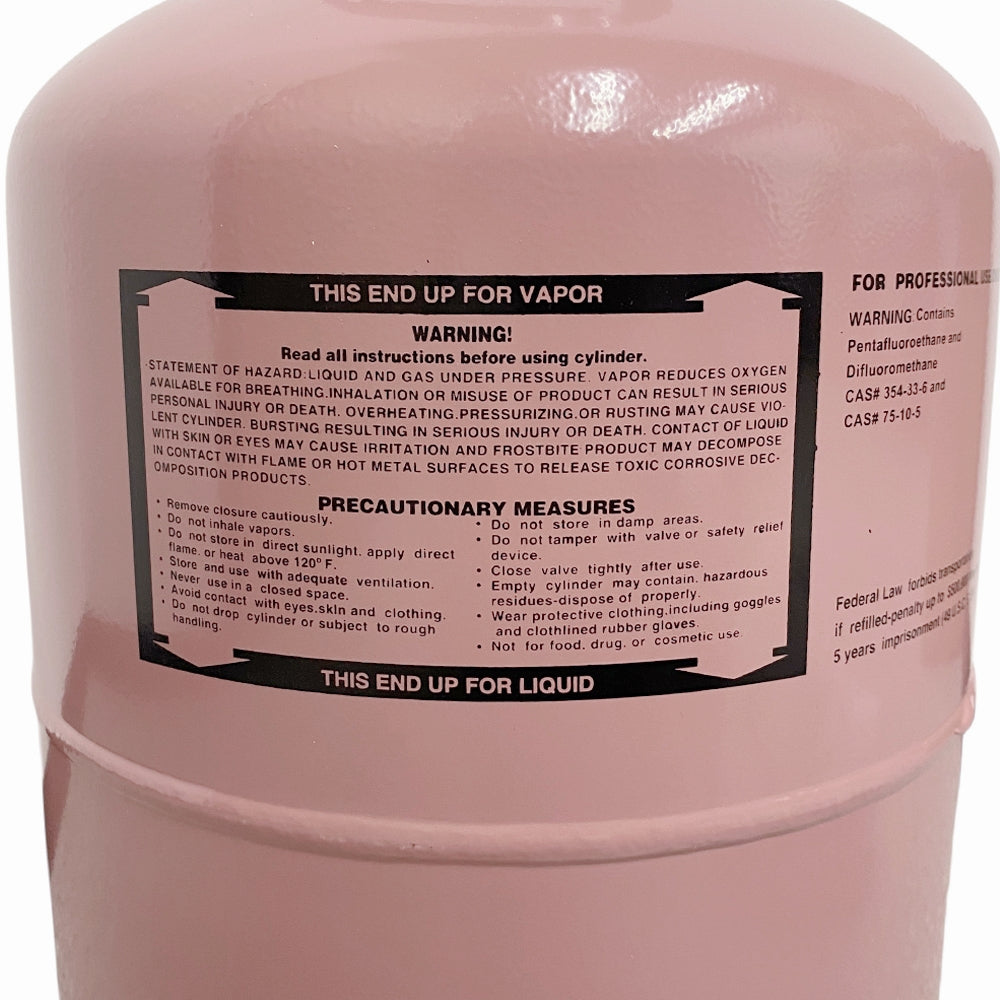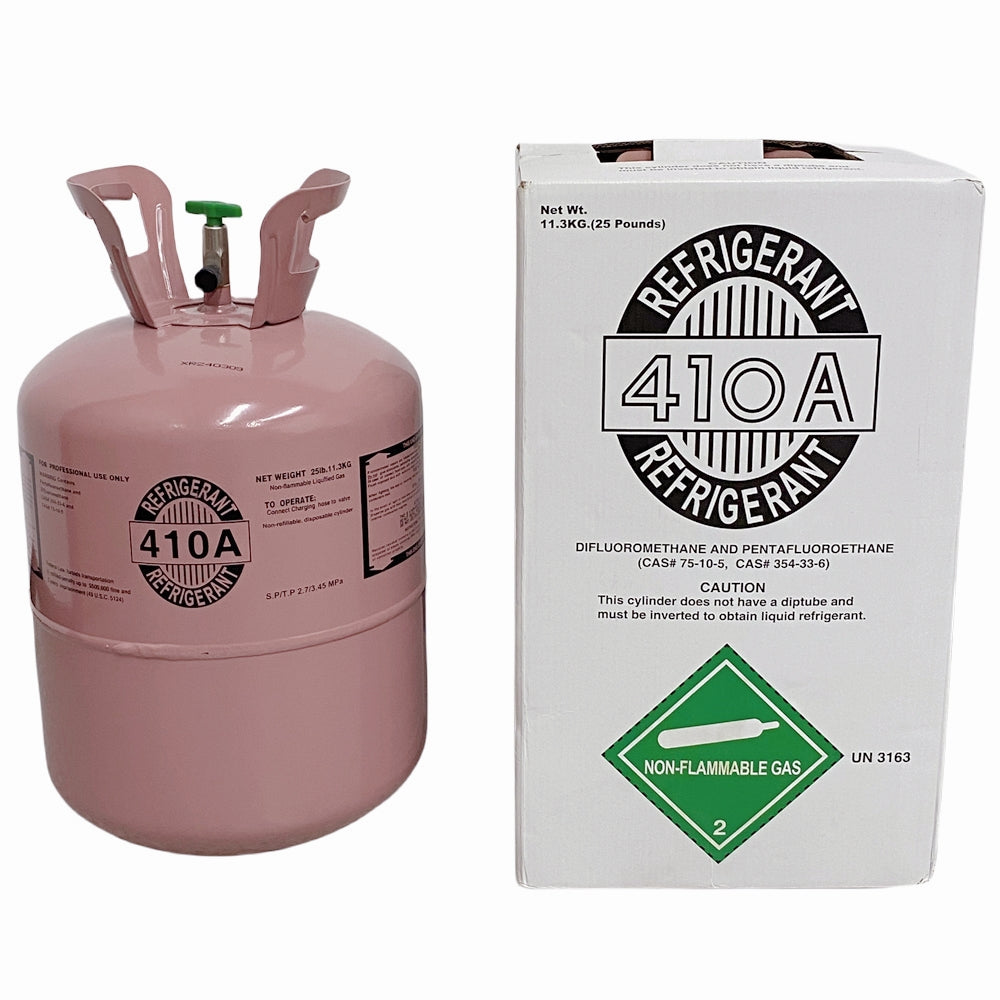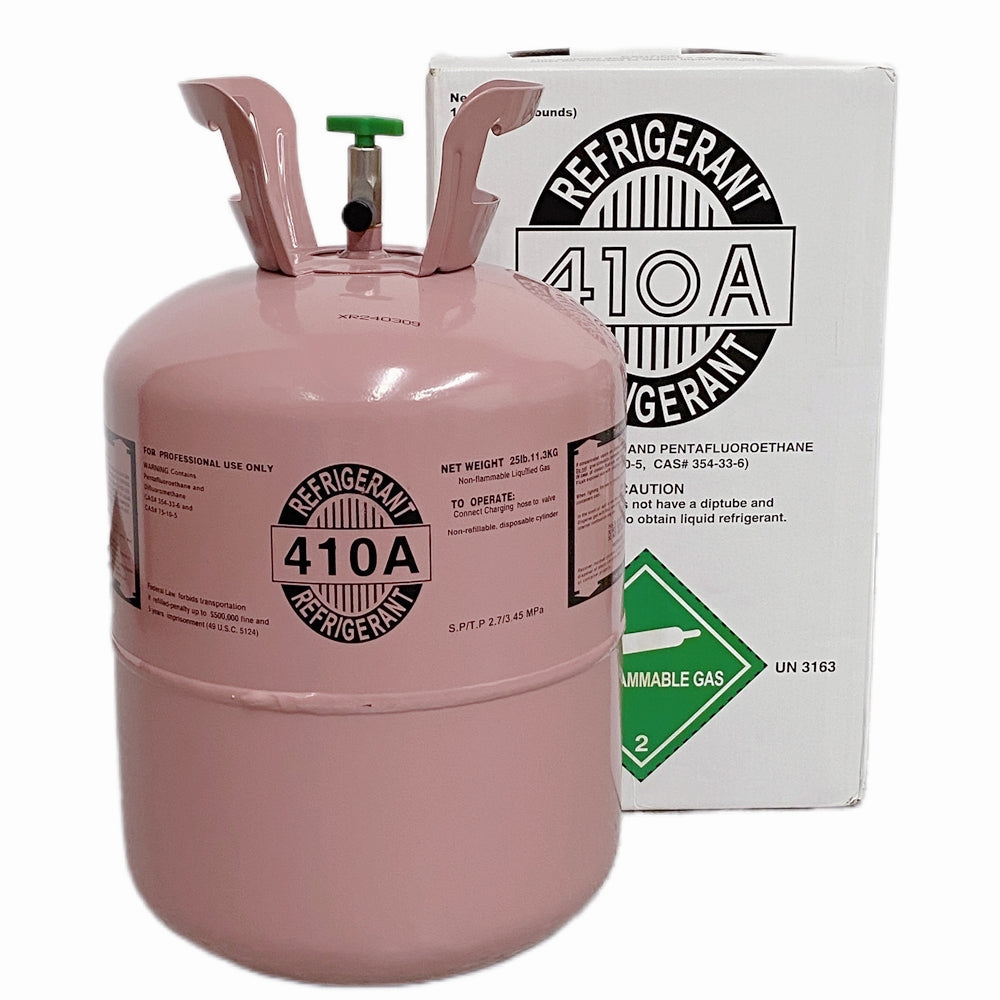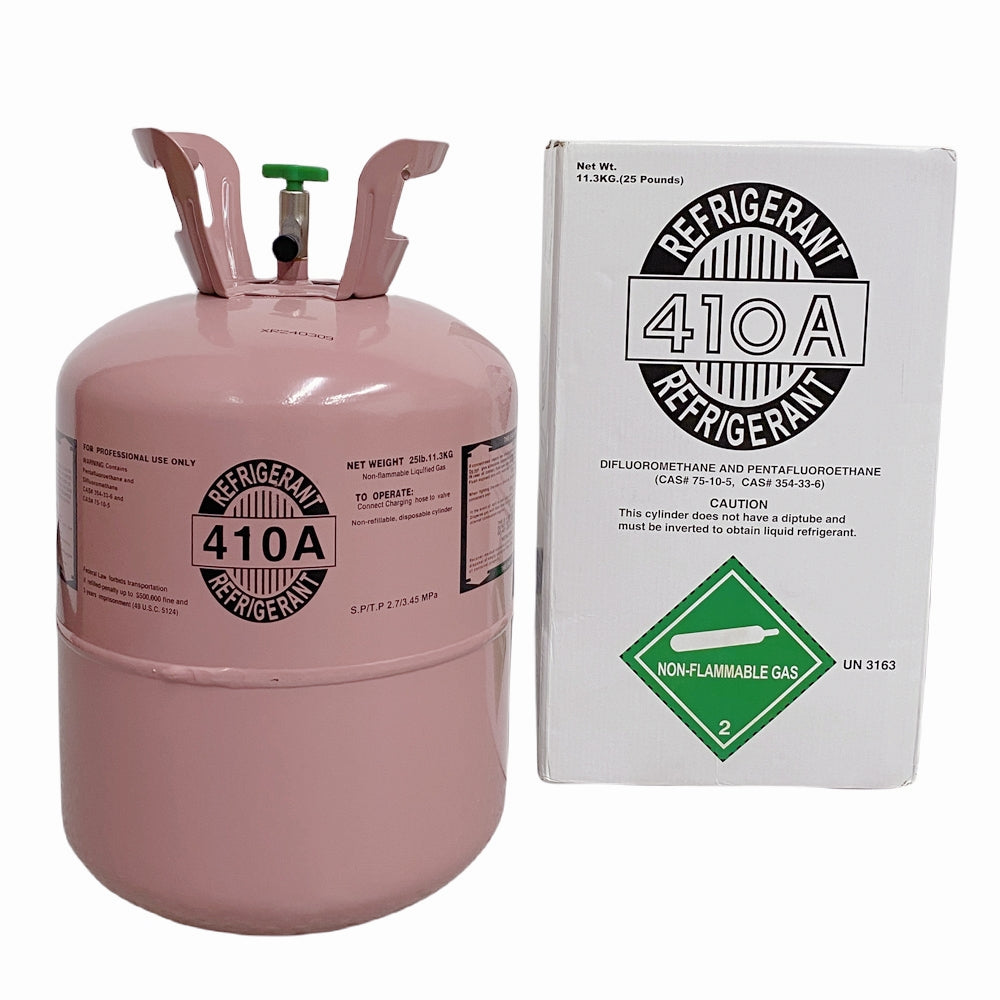Introduction: Why R-410A Stands Out
With the global phaseout of ozone-depleting refrigerants like R-22, R-410A has become the leading choice for modern air conditioning and heat pump systems. But what exactly makes it different from older refrigerants?
In this comprehensive guide, we’ll explore:
✔ Chemical composition & environmental impact
✔ Key advantages over R-22 and other refrigerants
✔ System requirements & compatibility
✔ Energy efficiency & cost savings
✔ Future alternatives & industry trends
Whether you're an HVAC technician, homeowner, or industry professional, this guide will help you understand why R-410A remains the dominant refrigerant—and what comes next.
1. What Is R-410A? (Chemical Composition & Environmental Impact)
A. Chemical Makeup
R-410A is a near-azeotropic blend of two hydrofluorocarbon (HFC) refrigerants:
-
50% R-32 (Difluoromethane) – Provides high cooling capacity
- 50% R-125 (Pentafluoroethane) – Improves stability & safety
Unlike older refrigerants (such as R-22), R-410A contains no chlorine, meaning it has zero ozone depletion potential (ODP = 0).
B. Environmental Impact
While R-410A doesn’t harm the ozone layer, it has a high Global Warming Potential (GWP = 2,088)—higher than R-22 (GWP = 1,810). This has led to new regulations (like the Kigali Amendment) pushing for lower-GWP alternatives (e.g., R-32, R-454B).
Key Takeaway:
✅ No ozone damage (ODP = 0)
⚠ High GWP (2,088) – Future phaseouts expected
2. How Does R-410A Compare to Other Refrigerants?
A. R-410A vs. R-22 (The Old Standard)
| Feature | R-410A | R-22 |
|---|---|---|
| Ozone Depletion Potential (ODP) | 0 | 0.05 |
| Global Warming Potential (GWP) | 2,088 | 1,810 |
| Operating Pressure | 50-70% higher | Lower |
| Cooling Efficiency | 15-20% better | Baseline |
| Lubricant Compatibility | POE oil only | Mineral oil |
Why R-410A Wins:
✔ More energy-efficient → Lower electricity bills
✔ Higher cooling capacity → Better performance in hot climates
✔ No ozone harm → Complies with modern EPA regulations
B. R-410A vs. Newer Alternatives (R-32, R-454B)
While R-410A is still widely used, newer refrigerants like R-32 (GWP = 675) and R-454B (GWP = 466) are gaining traction due to their lower environmental impact.
Comparison:
| Refrigerant | GWP | Flammability | Efficiency |
|---|---|---|---|
| R-410A | 2,088 | Non-flammable | High |
| R-32 | 675 | Mildly flammable | Slightly better |
| R-454B | 466 | Mildly flammable | Similar |
Takeaway:
- R-410A is safer (non-flammable) but has a higher GWP.
- R-32 & R-454B are more eco-friendly but require special handling due to flammability.
3. Key Benefits of R-410A
A. Higher Energy Efficiency
- 15-20% more efficient than R-22 → Lower electricity bills
- Better heat transfer properties → Faster cooling
B. Improved System Longevity
- Reduced compressor wear due to better thermodynamic properties
- Less risk of acid buildup (no chlorine breakdown)
C. Regulatory Compliance
- Meets current EPA & international standards (unlike banned refrigerants like R-22)
- Widely available (unlike phased-out options)
4. System Requirements for R-410A
⚠ R-410A operates at much higher pressures than R-22 (400-600 psi vs. 250-350 psi), so systems must be specially designed.
A. Essential Components
✔ Heavy-duty copper tubing (thicker walls to handle pressure)
✔ POE (Polyolester) lubricant (not compatible with mineral oil)
✔ Thermal expansion valve (TXV) required (no capillary tubes)
✔ High-pressure-rated service ports
B. Maintenance Tips
- Never mix with R-22 → Can cause system failure
- Use dedicated R-410A gauges (standard R-22 gauges can fail under high pressure)
- Check for leaks regularly (higher pressure = higher leak risk)
5. The Future of R-410A: Will It Be Phased Out?
Due to its high GWP, R-410A is expected to be gradually phased out in favor of lower-GWP alternatives like:
- R-32 (Used in newer mini-split systems)
- R-454B (A leading R-410A replacement in the U.S.)
- R-290 (Propane) – Ultra-low GWP but highly flammable
Timeline:
- 2025+ – Some regions may restrict R-410A in new systems
- 2030+ – Potential full phaseout in developed countries
What Should You Do?
✔ If you have an R-410A system, it’s safe for now but may need retrofitting later.
✔ For new installations, consider future-proof options like R-32 or R-454B.
Final Verdict: Is R-410A Still the Best Choice?
✅ Best for now – High efficiency, proven reliability, and wide availability.
⚠ Future concerns – High GWP means eventual phaseout.
Recommendation:
- If you’re replacing an old R-22 system, R-410A is a great upgrade.
- If you’re installing brand-new HVAC, consider R-32 or R-454B for long-term compliance.
Looking for certified, high-quality R410A refrigerant?
We’ve got you covered. Our cylinders are ready to ship with full compliance and unbeatable purity.
➡️ Click here to buy now and enjoy reliable cooling all summer long.


